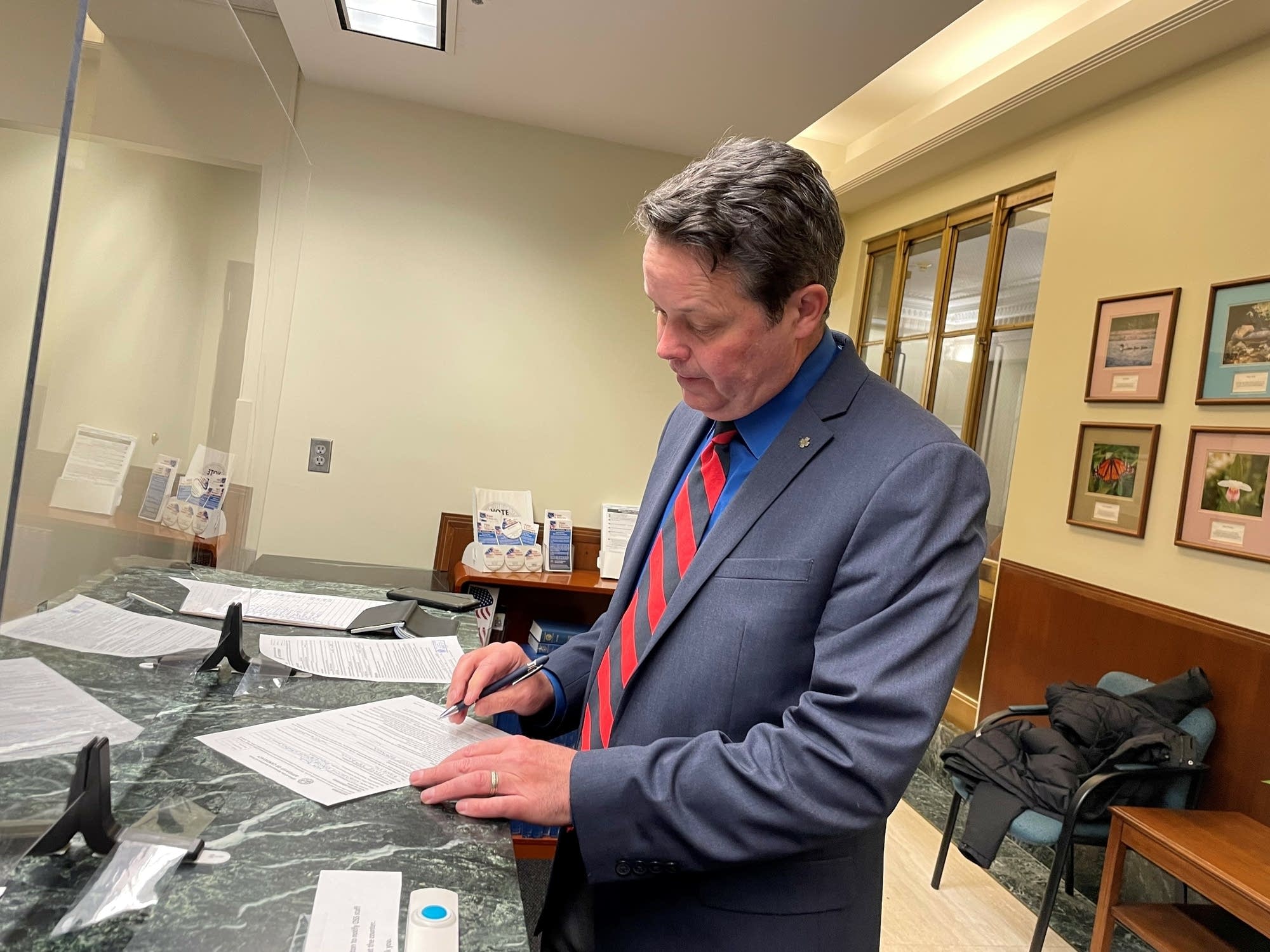Unprecedented campaign kicks off for open CD1 seat
Published 8:47 am Monday, March 14, 2022

- Albert Lea attorney Matt Benda enters the special election campaign in Minnesota's 1st Congressional District as a Republican on Thursday. Mark Zdechlik/MPR News
|
Getting your Trinity Audio player ready...
|
By Mark Zdechlik, Minnesota Public Radio News
There will be two elections for the congressional seat in southern Minnesota this year after the death last month of Republican Congressman Jim Hagedorn.
Carleton College political science professor Steven Schier has been closely following politics in southern Minnesota for decades. But even he’s flabbergasted by this year’s circumstances.
“This is the electoral equivalent of a two-headed calf at the county fair,” Schier said because the timing of Hagedorn’s death triggered one of the strangest set of election circumstances he can imagine under Minnesota law.
“You’re going to have a special election on the day of the primary and then an election for a differently drawn district a few months later,” Schier said. “It’s a real challenge for any party that is the underdog party in that district.”
The latest Republican candidate to enter the race: Hagedorn’s widow, former state GOP chair Jennifer Carnahan, who announced her candidacy for the special election on Monday morning.
Democrats are clearly the underdog party in the 1st District, which covers a large area of southern Minnesota from South Dakota to the Wisconsin border, Schier said.
Donald Trump won big there in 2016 and 2020 and Republicans and Democrats agree the new district borders do little to change the political make-up of the 1st.
“We’re solidly, solidly red, solidly Republican, solidly conservative,” said former 1st District Republican Party Chair Jerod Spilman.
Spilman said many people in his party were surprised that Democrat Dan Feehan, who twice narrowly lost to Hagedorn, decided not to run for the open seat this year.
As for the slew of Republicans in the race, Spilman predicted outsider candidates will not attract much support. Instead, Spilman says southern Minnesota Republicans are going to want someone who’s rooted in the district.
“A good candidate to represent Minnesota, one will have a strong agricultural background, somebody who understands producer’s business interests related to agriculture,” Spilman said.
More than one of the Republicans who have filed to run fit that bill. Brad Finstad was a state lawmaker and is a farmer who worked for the Agriculture Department in Minnesota under President Trump. Lawyer Matt Benda also has an ag background, and state Rep. Jeremy Munson is a hop farmer.
Former Hormel CEO Jeff Ettinger, who’s running as a Democrat, also has strong ties to agriculture.
As of Friday afternoon — prior to Carnahan’s announcement — eight Republicans, six Democrats, and one Legal Marijuana Now Party candidate had filed. The filing period closes at 5 p.m. Tuesday.
There will be a special primary on May 25 to cull the number of candidates. The special election will be on Aug. 9, and then the general election for the next two-year term in the newly drawn district will be on Nov. 8.
Despite Republican optimism, Democrats insist they’re not writing off the 1st District.
“We actually clawed back a lot of ground in 2020, despite the fact that Trump carried that district,” said Minnesota DFL Party chair Ken Martin, who notes that Democrat Tim Walz held the 1st District seat for more than a decade before his successful run for governor in 2018. And Trump lost ground in the 1st in the 2020 election, Martin said.
“He carried that district by a much smaller amount than he did in 2016,” Martin said. “And that would suggest that the shine was already off in ‘20. You combine that with the fact that Trump’s not on the ballot, those Trump-only voters that showed up for him in 2016 and 2020 are probably not likely to show up again in this upcoming midterm.”
Whoever Democrats nominate in the special and general elections will benefit from having Walz at the top of the ticket this fall because he’s popular in southern Minnesota, Martin said.
Political scientist Steven Schier said even though special elections typically draw low voter turnout, he thinks the political eyes of the nation will be on the 1st District in August.
“National parties are going to be watching this to see what the level of turnout is, which party benefits from that turnout, and what the result is in terms of which party wins,” Schier said. “People are looking for evidence as to trends for November, and the August race in Minnesota is one of the few places where they can get that evidence.”



